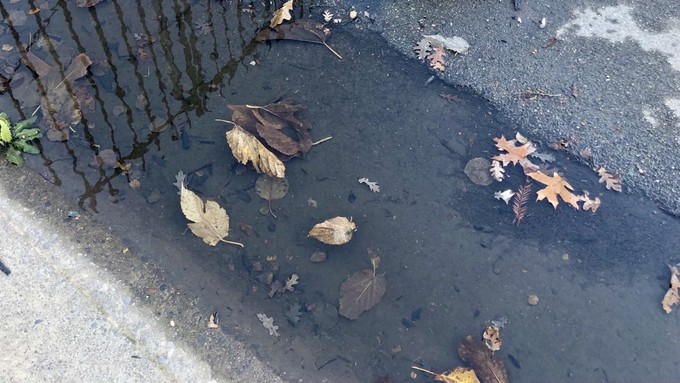
Sacramento expects 2.3 inches of rain (or more) in the next three days

The gutters don’t unclog themselves! Avoid creating street ponds by making sure gutters and storm drains are clear before the rain starts. Check downspouts around the house, too. Kathy Morrison
According to the National Weather Service, Sacramento will get a one-two punch this weekend from a pair of major storm systems. The first arrives Friday evening and will soak Saturday events. The second – and the heaviest – starts Sunday night with rain expected to continue through Wednesday.
These twin atmospheric rivers are expected to drop about 2.3 inches of rain in the next three days in downtown Sacramento – and more in the foothills. So, plan accordingly.
* If you haven’t already, turn off sprinklers and other irrigation. Everything should get a deep soaking from these storms.
* It may be too much water for some plants – especially succulents. If possible, move succulents growing in containers to someplace under cover so their pots (and roots) don’t become waterlogged.
* Make sure gutters and storm drains are clear of leaves and other debris.
* Be careful walking on wet soil; it can compact easily – squeezing out any air. Microbes (and roots) need those underground air pockets to survive.
* January is the time to apply horticultural oils on fruit trees (especially copper spray on peaches), but put off that chore for at least a week. It’s too wet for those anti-fungal sprays to be effective.
* Don’t dig in the garden this next week – it’s too wet and risks soil compaction. Any planting can wait until these storms pass. Right now, all that water could rot their roots.
* Got bare-root roses or other plants waiting to go in the ground? Pot them up in large black plastic pots with potting soil. Then, transplant them – soil and all – into the garden in March. They’ll benefit from this head start.
* Watch out for leaning trees. All this moisture can destabilize their roots. If you see trouble, call an arborist – before the tree falls.
Comments
0 comments have been posted.Sacramento Digs Gardening to your inbox.
Sites We Like
Garden Checklist for week of July 21
Your garden needs you!
* Keep your vegetable garden watered, mulched and weeded. Water before 8 a.m. to reduce the chance of fungal infection and to conserve moisture.
* Feed vegetable plants bone meal, rock phosphate or other fertilizers high in phosphate to stimulate more blooms and fruiting. (But wait until daily high temperatures drop out of the 100s.)
* Don’t let tomatoes wilt or dry out completely. Give tomatoes a deep watering two to three times a week.
* Harvest vegetables promptly to encourage plants to produce more. Squash especially tends to grow rapidly in hot weather. Keep an eye on zucchini.
* Pinch back chrysanthemums for bushy plants and more flowers in September.
* Remove spent flowers from roses, daylilies and other bloomers as they finish flowering.
* Pinch off blooms from basil so the plant will grow more leaves.
* Cut back lavender after flowering to promote a second bloom.
* It's not too late to add a splash of color. Plant petunias, snapdragons, zinnias and marigolds.
* From seed, plant corn, pumpkins, radishes, winter squash and sunflowers.